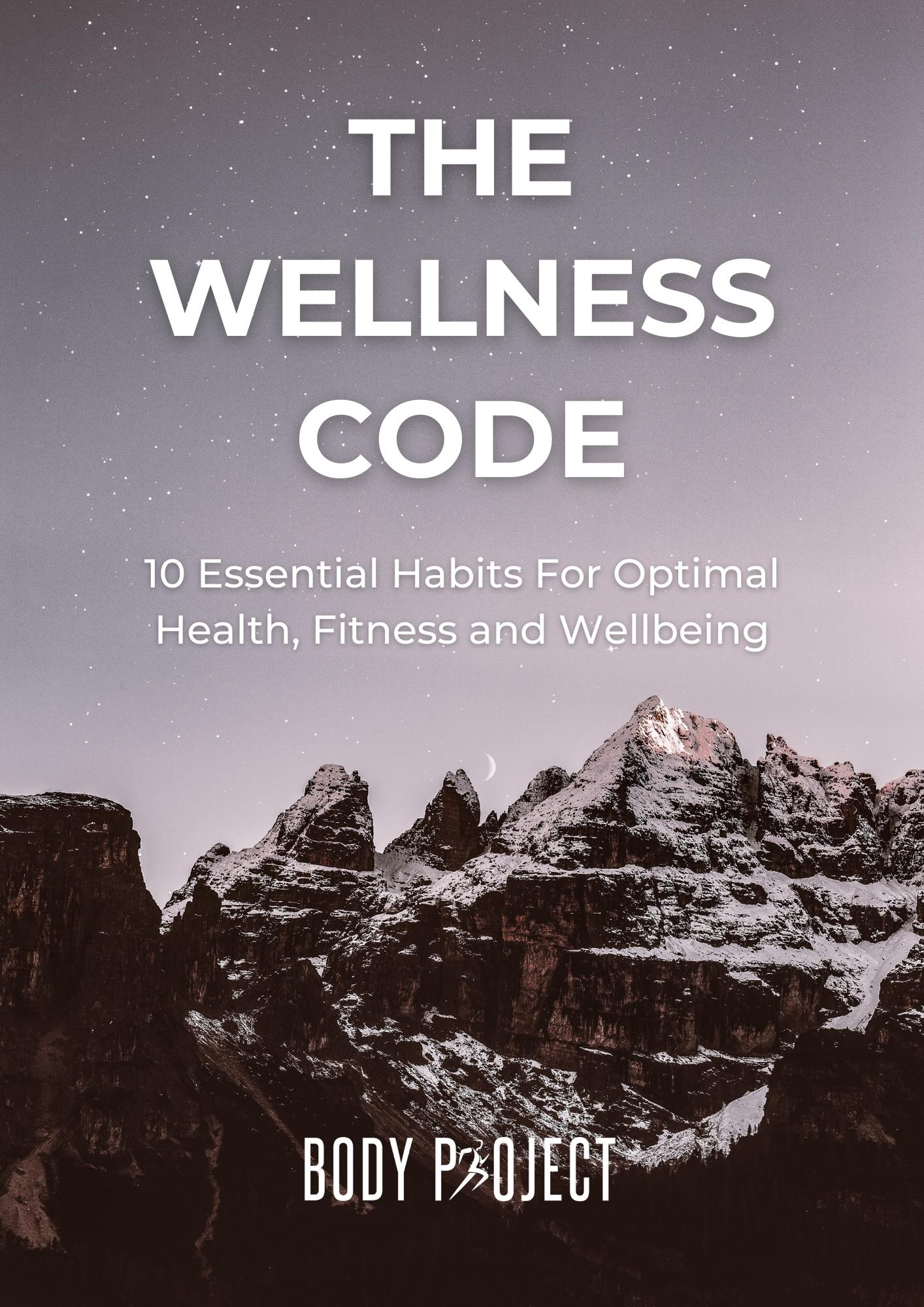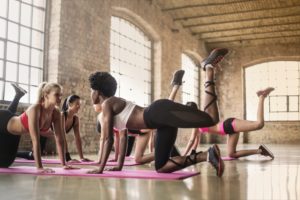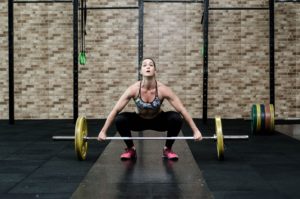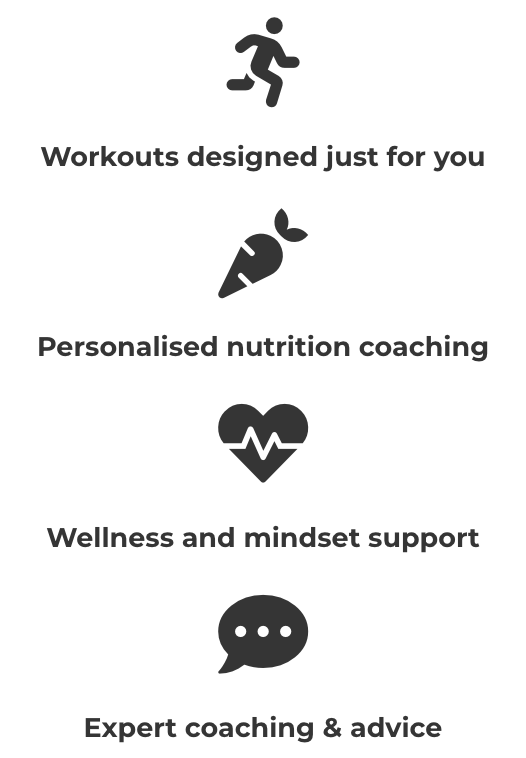Sign Up For Special Offers & Exclusive Content
The world of health and fitness can feel like a minefield of conflicting advice on how to work out, which products to buy, and what’s best for your body. If you’re a woman who follows health and fitness influencers on social media, you won’t have to look far to find advice on how best to train, eat, and live in your female body.
I want to help you determine fact from fiction and empower you with a clearer understanding of what it really means to be a fit, strong, and healthy woman.
Let's discuss how your menstrual cycle typically affects your body, and how you can adjust your training and nutrition to better meet your body’s needs. By the time you’ve finished reading, my aim is for you to have some actionable methods of working with, rather than against, your cycle.
To really help you get the most from this piece, I’d like you to really consider your current training status and exactly what you hope to achieve with regards to your training and health, and bear those things in mind as you read. Knowing where you are now as well as where you want to be will help you to relate your experience to the information laid out here.
Should Women Exercise Differently From Men?
This article started its life as a talk I delivered at the BodyPower fitness convention in May 2018. When I was asked to discuss (and of course answer) the question: “Should Women Train Differently From Men?” at first I was honoured, but a little confused. After all, I don’t offer a particular service for women. I’m a personal trainer and online coach: I coach individuals very specifically for their own goals, taking into account many variables such as their lifestyles, health issues, and the resources (time/ money/ support) they have available to them.


I don’t offer a service that’s specifically for women for one reason: the decisions women need to make around their health and training are very much the same as the ones men need to make. There are only a few physiological differences to take into account, and even so it would be impossible to assume a particular decision was correct based on gender alone.
The one key difference between men and women that should be considered when weighing up training, nutrition, and lifestyle options is the hormonal profile.
Our hormone profile: the balance of various hormones inside of us dictates our gender, sexual function, bone structure, and predisposition to build strength and muscle, amongst other things. Despite these small differences, we still have the same cardiovascular system, musculoskeletal system, digestive system, and central nervous system as our male counterparts.
Women experience periods, pregnancy, and menopause, which of course men do not. Pregnancy and menopause are complex and important topics, but I’ll have to cover them in another article. To help as many women as easily as possible, here I’ll simply focus on the menstrual cycle.
The Menstrual Cycle
Love it or hate it, it’s a fact of life. Healthy women between the ages of roughly 12 to 51 (highly variable) experience menstruation for a few days every 28-ish days.
It’s more than just about your period though. The entire 4 week cycle comes with hormonal changes causing a range of effects including changes in mood, appearance, and performance ability. We can split the cycle into 2 overarching phases: the follicular phase, and the luteal phase.
The Follicular Phase
The follicular phase constitutes the first half of the menstrual cycle: that's the first two out of four weeks. The first day of your cycle can be recognised as the first day of your period. During the follicular phase the female hormone oestrogen begins at its lowest point, climbing slowly during the first week and peaking around the end of the second week before falling sharply as ovulation takes place.
This is a great time to focus on making progress in your training.
Unencumbered by PMS (Pre-Menstrual Syndrome), you’ll likely have a higher tolerance for pain, force generation capacity, and insulin sensitivity. The latter denotes an increased carbohydrate tolerance which can be useful if you’re pushing for progress as tougher (heavier or more intense) training requires more glycogen, which we create in our bodies using carbs.
At the end of week 1 as your period finishes, your BMR will be at its lowest point. BMR stands for Basal Metabolic Rate, and refers to the number of calories your body requires to function minimally. This does not include calories required for movement or exercise, and so of course these should be calculated and added on top to form your total daily calorie requirement.
It's important to remember to train safely.
At the end of week 2 and the beginning of week 3 you may be at increased risk of injury due to heightened oestrogen levels. This is because oestrogen affects cell collagen and can have a detrimental effect on your motor control. Ensuring great technique and safe movement as you transition into the second phase of your cycle can be a useful preventative measure against pain or injury.
You can still train hard at the end of the follicular phase, but it might be a smart idea to use this time to go for personal bests in your lifting and shortening your HIIT (High Intensity Interval Training) sessions, or even swapping them out for LIIT (Low Intensity Interval Training). This will reduce your overall volume of training and allow you to focus on your movement patterns, further reducing your injury risk whilst still making the most of your heightened strength and fitness capacity.
The Luteal Phase
The luteal phase represents the second half of the menstrual cycle, or the 3rd and 4th weeks. It occurs after ovulation, which is when an egg departs from your ovaries and begins to travel toward your uterus.
During week 3 you might experience symptoms of PMS including water retention, sore breasts, fatigue, discomfort, bloating, and low or changeable mood. Your body temperature will be slightly higher, and you might weigh a little more due to water weight, making bodyweight movements feel more difficult than usual.
Insulin sensitivity starts to decline at this point, which could mean drops in energy after consuming carb-heavy meals. You’ll likely prefer to have a lower percentage of your overall calories from carbs to reduce this “carb coma” effect, although due to a lower serotonin production in your body you might find that your cravings for carbs are higher than usual. You can negate the effects of lower serotonin production by eating foods rich in the amino acid tryptophan (just have a google - there are loads!) to boost your serotonin levels.
It's not all bad news, though.
Fat will more readily be used as fuel at this time, and so this is a great time to incorporate LISS (Low Intensity Steady State) training, also known as cardiovascular or aerobic exercise.
In order to ensure you’re using your fat-burning energy system rather than your glycogen-fuelled systems, keep cardio sessions at a light, conversational pace. You should be slightly out of breath, but able to go for quite a while and still talk in mostly unbroken sentences.
Your BMR climbs during the luteal phase, peaking around halfway through. This means the minimum number of calories your body needs to function will be higher, and you’ll be burning more calories through the process of food digestion (metabolism), too.
Menstruation, where both the egg and the uterine lining are shed once the egg has arrived at the uterus, begins after week 4, re-starting the cycle. For many women this is an unwelcome experience, however as unpleasant as it may or may not be for you personally, you will notice that your PMS symptoms begin to decline on the first day of your period, improving as it progresses, and disappearing once you come to the end of the process.
How To Eat And Exercise Around Your Menstrual Cycle
A better understanding of the internal processes occurring during your cycle will be useful whatever your goals are, but of course you shouldn’t follow the advice here to the letter just because you’re a woman who has periods. To get more specific guidelines for your personal situation, choose the statement that most closely applies to you from the three below:
"I'm training purely for health and enjoyment. Wellbeing is more important to me than performance or appearance."
If you're not overly precious about seeing extremely fast or impressive results, then I’d recommend experimenting with the following:
Keep a journal of the symptoms and moods you experience during your cycle. It doesn’t have to be detailed, or even every day - just the stuff that feels relevant. It doesn’t have to be forever either, but by recording more than one month you can begin to notice patterns and variabilities.
Weigh up your own findings against the information in this article. You may not experience all of the symptoms mentioned, you might experience different symptoms, or you might find clarity in your experience as you come to understand when and why these occur.
"I'm training for sporting performance or to improve my appearance, and have been exercising consistently for a year or less."
If you’re training for sporting performance or a specific aesthetic result and you’ve been training consistently for around a year or less, it would probably benefit you to understand this information, but for the most part train normally. Since you’re relatively new to training, you’re likely far enough from your genetic potential to be unable to train with enough volume or intensity for your cycle to have a very detrimental effect on progress. In most cases, women like you should be fine to train throughout their period, or not account for the changes in your cycle when programming until you reach a more advanced level of training.
It will still be useful for you to understand more about your body’s processes to guide your training, even if it’s just about not beating yourself up about a poor performance or finding a normally manageable session difficult.
"I'm training for sporting performance or to improve my appearance, and have been exercising consistently for more than a year or two."
If you’re training for performance or aesthetics, and have been training consistently for more than a year or two, it would be wise to programme accordingly. At this level of training, your programming should be considerably more complex, with a fortnightly or monthly cycle of workouts, rather than a repeated weekly cycle. You can account for your body’s changing needs and abilities to see improved results from your training.
Whatever your ability, level, or goal, I would highly recommend consulting your coach or trainer when it comes to knowing how to programme different types of workout for you as an individual. Always avoid taking generalised advice where possible, and seek answers and solutions that are specific to you.
The Importance Of Individualised Workout Programming
Before writing a programme for any of my clients, we go through an in-depth consultation together to establish exactly where they're at and precisely where they want to be. By getting a really clear picture of both our beginning and end points, we save ourselves masses of time and effort in reaching that sweet spot.
We do (generally) have different cultural experiences relating to our genders. Things like societal expectations, traditional gender roles, and religious/moral beliefs all shape our thoughts, responses, behaviours, and even our physiology. Again, however, these are impacted by so many variables it would be impossible to make any fair assumptions.
Sure, women should train differently from men, but men should be training differently from men, too! We’re all unique physically, mentally, emotionally, spiritually, etc, and every reasonably possible variable should be considered when putting together a training plan.
Search Posts
Free Download
Popular Posts
Discover Online PT
Online Coaching provides expert support, tailored exercise plans and nutrition & lifestyle guidance to help you become the best version of yourself.
Read More Helpful Articles
Subscribe For New Post Updates
Receive new posts, special offers, discounts, plus exclusive content that we only send out via email.
Don't miss out!







